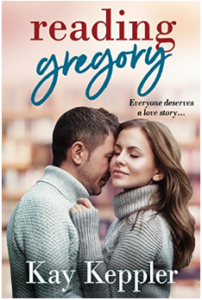Dreams as Story Devices by Kay Keppler
 Let’s welcome back monthly columnist, editor, and novelist, Kay Keppler, as she shares with us “Dreams as Story Devices.” Enjoy!
Let’s welcome back monthly columnist, editor, and novelist, Kay Keppler, as she shares with us “Dreams as Story Devices.” Enjoy!
***
Dreams have played crucial roles in literature. Dickens’s A Christmas Carol wouldn’t happen without Scrooge’s dream, and in The Metamorphosis, Kafka’s protagonist is transformed into a giant beetle after an uneasy dream. Shakespeare’s plays are full of characters whose dreams foretell their actions. However:
Don’t Start Your Story with a Dream
Here’s a guideline that might seem contradictory: No matter how much you might be tempted to do otherwise, don’t write, “And then s/he woke up” or the equivalent after your opening passage.
Here’s why.
You Can’t Make Sense from Nonsense
In real life, dreams have their own logic. They jump around, juxtapose images, fade and intensify, ignore transitions. They can have vivid images or events, or they can be vague feelings with murky, ungraspable situations. They often don’t make sense, but they are incontrovertible. You can’t argue or refute them—or even make sense of them—because you had the dream.
And yet, when the dream is translated or converted or conveyed in rational prose, it sounds artificial. Fake. Forced. You can lose a lot of readers quickly if the opening to your story is a dream, because if it’s a dream, it’s unlikely to make sense or read well, even if you’ve written it “authentically.”
Readers Might Not Go with You
But a bigger problem with fictional dreams is that they ask readers to invest emotionally in an experience that turns out to be false, or at least, “not real.” This can have two consequences when readers learn the passage was a dream:
- They continue reading with their emotions in check (it was just a dream)
- They stop reading because they feel cheated (it was just a dream)
But What About Dickens? And Shakespeare? They Did It
Maybe you want to include a dream to establish a motif or set a mood or enhance a theme. And if that motif, mood, or theme resonates through the rest of the story, it can earn back the reader’s trust. If that’s the case, maybe the dream has a place in your narrative.
However, think hard about whether a dream is the best way to convey your motif or theme, especially in the opening of your story, and if you gain enough from it by the end to justify alienating your reader at the start.
What Are You Writing?
Perhaps you’re writing a psychological thriller, and you want the dream to underscore your protagonist’s realistic fears—of the dark, the unknown, the past, the antagonist, or something else. An opening dream can raise the story question: What happened to this person? That works. But again, think about whether a dream is the best way to accomplish this goal.
To Sleep, Perchance to Dream
Although dreams have been used for centuries as a literary device, they may not be the best way to convey the actions and emotions you want. Think hard before you employ them. Sometimes it’s just better to let sleeping dogs lie.
***
ABOUT THE AUTHOR
Kay Keppler is an author Zero Gravity Outcasts, Betting on Hope, Gargoyle: Three Enchanting Romance Novellas, and editor of fiction and nonfiction –Angel’s Kiss and Outsource It!
is an author Zero Gravity Outcasts, Betting on Hope, Gargoyle: Three Enchanting Romance Novellas, and editor of fiction and nonfiction –Angel’s Kiss and Outsource It!
She lives in northern California. Contact her here at Writer’s Fun Zone in the comments below, or at kaykeppler@yahoo.com to ask questions, suggest topics, or if you prefer, complain.
***
If you’re curious about being a guest writer for Writer’s Fun Zone, like Kay Keppler, check out our guidelines here: https://writersfunzone.com/blog/guest-columnists-welcome/.






